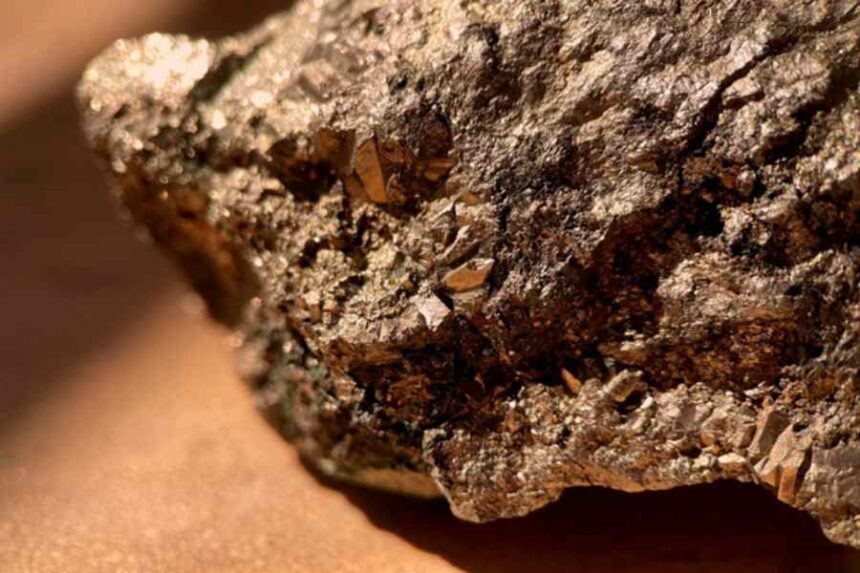Gold mining has long been an integral part of human history, with its allure symbolizing wealth, power, and status. But have you ever thought about how much gold has been mined since the very beginning of humanity? Over time, the scale of gold extraction has reached staggering heights, with approximately 216,265 tonnes of gold being mined to date. This figure underscores increased mining activity, particularly since the mid-20th century, when technological advancements and new deposits fueled production.
And how do you think, did this activity have any impact on our globe? Obviously, yes. This rapid expansion of gold mining comes at a significant environmental cost. Beyond its economic value, gold mining wreaks havoc on ecosystems and local communities. In regions where gold mining is one of the most massive sources of income, like Ghana, for instance, small-scale mining operations have led to water pollution, deforestation, soil degradation, and destruction of local communities.
Increasingly, however, satellites are helping to shed light on this damage. By allowing experts to view live satellite map of mining activities, these technologies provide unprecedented visibility of remote sites, revealing illegal activities and environmental degradation in real time. But first, it’s essential to understand the key problems—and then figure out how live satellite images can play a role in tackling them.
Behind the Shine: How Gold Mining Wounds the Earth
Despite government efforts to curb these impacts, the industry continues to harm the environment, often leaving behind a legacy of destruction. What’s more worrying is that many consumers remain unaware of the hidden toll of gold mining, as the methods used to extract it frequently involve hazardous chemicals and unsafe labor conditions. The waste generated by gold production is staggering; for example, the production of just one wedding ring creates 20 tons of waste. But that’s not all. Here are just some of the problems and consequences that gold mining brings.
While not as visually devastating as clear-cut logging or industrial agriculture, gold mining inflicts deep, long-lasting wounds on tropical landscapes. In regions like the Amazon, West Africa, and Southeast Asia, extractive operations are expanding rapidly, often under the radar. Gold can bring money and jobs, but mining it often causes serious harm to the environment—especially when there aren’t strong rules in place to control how it’s done.
In the Amazon, for example, mining often leads to deforestation that spreads far beyond the areas where it’s officially allowed. Between 2005 and 2015, gold mining contributed to over 11,000 km² of forest loss—around 9% of all deforestation in the region during that period. This impact isn’t limited to where the gold is dug; it radiates outward through new roads, housing developments, and industrial infrastructure. In places like the Carajás Mineral Province in Brazil, trees are felled not only for land but also for charcoal production to support nearby metal smelters, fueling the annual destruction of over 6,000 km² of forest.
The damage doesn’t stop on land. Rivers suffer as well. Mercury, a toxic chemical used in gold extraction, often finds its way into waterways, contaminating fish and entering the food chain. In Brazil’s Tapajós River, over 90% of fish consumed by local villagers have been found to contain dangerous levels of methylmercury. These waters often sustain indigenous communities whose health and way of life are under direct threat.
Live Satellite Imagery Reveals Expanding Mining Fronts
However, gold mining is no longer hidden deep within forests or remote valleys. Thanks to satellite technology, it’s now visible from space. With modern Earth observation tools, experts can detect new mining sites, monitor active operations, and even track illegal activities in real time. These capabilities have become vital as mining increasingly pushes into ecologically sensitive and hard-to-reach areas like the Amazon, West Africa, and parts of Southeast Asia.
Satellites capture high-resolution images of the Earth’s surface, which can reveal everything from the clearing of vegetation to the appearance of open pits or waste tailings. Multispectral and radar imagery helps analysts identify changes in soil, rock layers, and vegetation that often signal mining activity. With regular imaging intervals, it’s possible to compare past and current conditions—spotting expansion and environmental damage early.
Tools like EOSDA LandViewer make this process accessible and efficient. Users can see live satellite images or view historical imagery to track how landscapes have changed over time. This empowers not only researchers and environmental groups but also governments and local communities to respond more quickly to unregulated or harmful mining.
Beyond detection, live satellite imagery supports renaturation efforts by tracking vegetation recovery and water quality after mining ends. In a world where illegal operations often outpace enforcement, these bird’s-eye views are becoming a frontline defense for environmental protection.
Case Study: Tracking Illegal Gold Mining in Brazil with EOSDA LandViewer
In the heart of Brazil’s Pará state, the Munduruku Indigenous People face a double crisis—illegal gold mining and its devastating environmental consequences. Rivers once teeming with life now run murky with mercury, while vast stretches of rainforest have been stripped bare to extract gold. The health of local communities has suffered, with poisoned water and contaminated food leading to illness and long-term ecological damage.
To assess the full scope of the destruction, EOS Data Analytics turned to satellite technology. Using historical data from 2017 and 2022 via EOSDA LandViewer, researchers tracked land use changes around Itaituba, a mining hotspot. The images revealed massive deforestation and visible river discoloration, clear signs of mining-related pollution and forest loss.
Thanks to tools that let users get live satellite images, organizations can now monitor these threats in real time. EOSDA’s work shows how remote sensing not only reveals the scale of damage but also supports action toward protecting endangered environments like the Amazon.
Conclusion: Gold’s Hidden Cost, Exposed from Orbit
Gold may glitter, but its environmental toll is far from shiny. From deforestation to poisoned rivers, the true cost of gold mining is increasingly visible—thanks to satellite technology. By allowing experts and advocates to view live satellite images of affected regions, this technology is transforming how we track, understand, and respond to mining-related damage. Platforms like EOSDA LandViewer are empowering governments, NGOs, and local communities to take timely action, inform policy, and hold violators accountable. In the fight to protect fragile ecosystems, the view from above may be one of our strongest tools.




